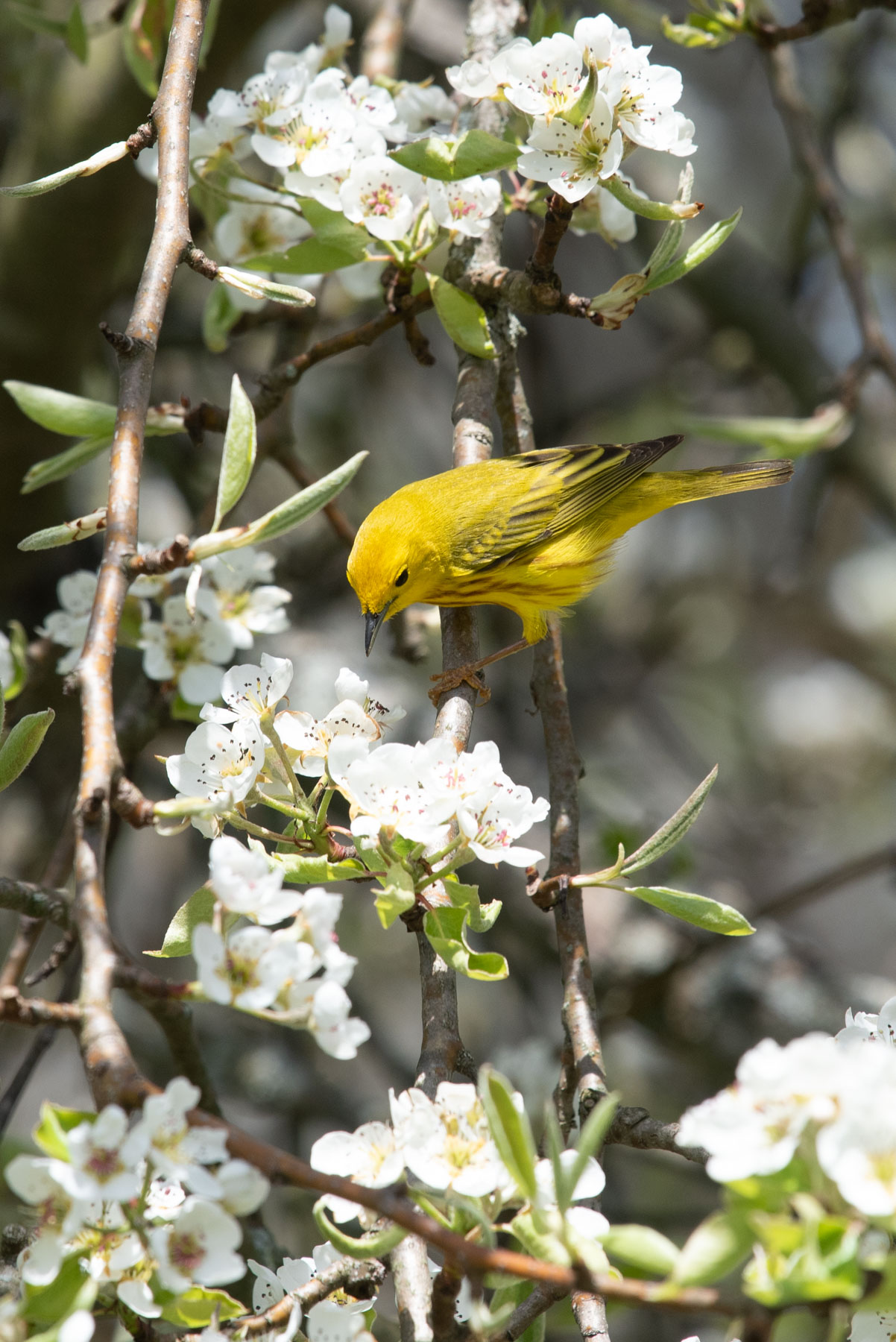
 After several months of looking at a predominantly white or brown landscape, the world is finally starting to take on a more colorful spring-like appearance. The grass is getting greener, the trees are budding, and the first flowers are out. Soon, our backyards, neighborhood parks, and other natural areas will be alive with bird song and splashes of vibrant color as our tropical migrants are returning for the summer. Orioles, hummingbirds, warblers, flycatchers, buntings, grosbeaks, and more – they are all on their way!
After several months of looking at a predominantly white or brown landscape, the world is finally starting to take on a more colorful spring-like appearance. The grass is getting greener, the trees are budding, and the first flowers are out. Soon, our backyards, neighborhood parks, and other natural areas will be alive with bird song and splashes of vibrant color as our tropical migrants are returning for the summer. Orioles, hummingbirds, warblers, flycatchers, buntings, grosbeaks, and more – they are all on their way!
Different species occupy different habitats, and finding most of these beautiful birds will likely take you to a variety of destinations throughout the county. Warblers and Tanagers are forest birds and a hike through one of our many natural areas will put you in the right place to see some. They tend to be high up in the treetops and once the trees are fully leafed out they can be challenging to see, so grab your binoculars and hit the overland trail, hike Chautauqua gorge, or any forested area in the next few weeks to have the best chance of success. If you pick an area where the terrain is fairly steep, you may have an easier time peeking into the treetops where they are closer to eye-level. Several species, like Yellow Warblers or Waterthrushes, prefer being close to water, so look for the former near lakes and ponds and the latter alongside wooded streams.

 Other species, like the Baltimore Oriole or the Indigo Bunting, prefer tree lines adjacent to an open field. The bike path along Jackson-Taylor Park, part of the City of Jamestown’s Chadakoin Riverwalk system, is a great place to see these, as well as at least another 130 other bird species that have been documented there!
Other species, like the Baltimore Oriole or the Indigo Bunting, prefer tree lines adjacent to an open field. The bike path along Jackson-Taylor Park, part of the City of Jamestown’s Chadakoin Riverwalk system, is a great place to see these, as well as at least another 130 other bird species that have been documented there!
Fortunately, some species are pretty comfortable living in close quarters with us and with a little help you may be able to attract some to your yard. Ruby-throated Hummingbirds are among those birds that will come to a feeder filled with sugar water, or to backyard plants – especially if they are red, orange, or pink in color. Planting Bee balm, Monarda, Fuchsias, Geraniums and other flowering plants around your home, even if they’re in pots or in hanging baskets, will increase the chances that you will be visited by hummingbirds all summer. If possible, get native plants because they provide the best resources for our native insects and birds, unlike non-native flowers or cultivars that rarely survive here. Jelly feeders and orange feeders can also help to attract Orioles to your home.
If you want to create bird habitat around your house, please keep this in mind: one of the main reasons why these beautiful birds leave our area in the winter is not because it is too cold for them (they can handle the freezing temperatures just fine). More importantly, it is because their food can’t handle our winters. With few exceptions, these migrants are insectivores and will only eat bugs (which is also why they won’t come to your seed-filled bird feeders). As spring is starting, insect numbers are pretty low still. If you can refrain from mowing (part of) your lawn to allow some wildflowers to blossom, that will help boost insect populations and feed birds during these early, unpredictable spring days. Also, leaving the dead stalks of last year’s goldenrods and other wildflowers up until their new growth emerges will provide important hiding places and habitat for tired migrating birds, while the bugs that overwinter in those stalks will feed them.
You can save yourself some chores and feel good about helping your backyard birds by limiting early season yard work and, essentially, creating backyard bird feeders. And it’ll leave you more time to go birding!
 Twan Leenders
Twan Leenders
Director of Conservation
Chautauqua Watershed Conservancy
twan@chautauquawatershed.org
RELATED ARTICLES:
Birding in Chautauqua County, New York
A Flying Sign of Hope: the Recovery of Chautauqua County’s Osprey Population


